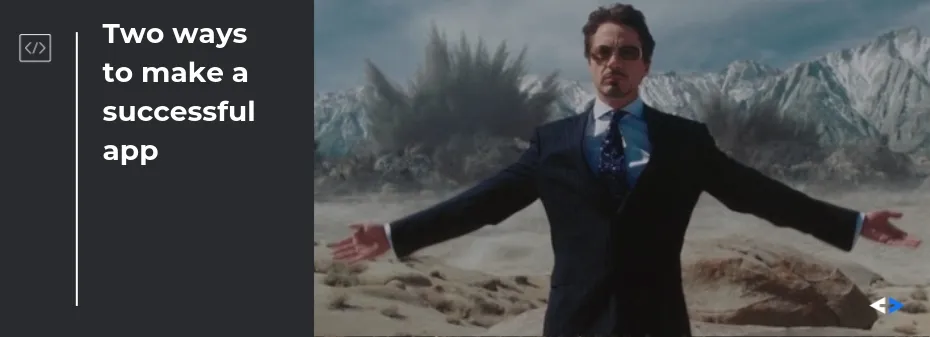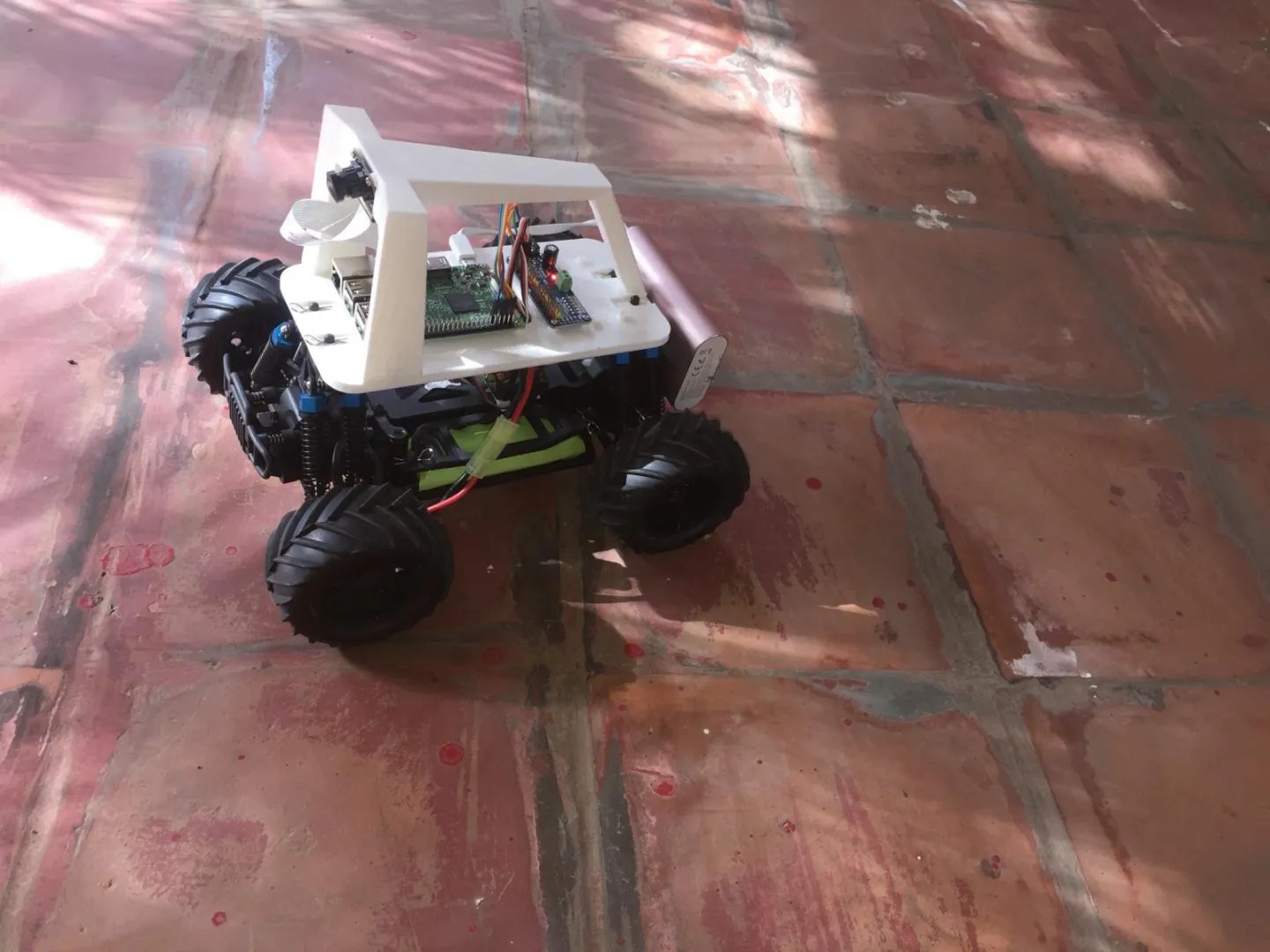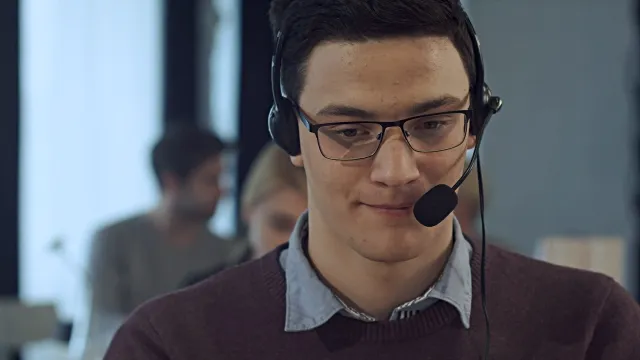
Two Ways to Make a Successful App

As a Magora executive working at the company for more than six years, I’ve seen some of our partners achieve major successes and others leave in disappointment. I suppose there’s some systematic approach which can often lead to their success or failure – let me share my observations about it with you.
Working with business idea
I’ll begin by sharing with you a real example I heard from a client of mine several years ago.
Bill and Richie were two friends in their final year of college. One day they were sitting in a bar and discussing over a couple of beers what they should do after they graduated. They decided their own business would be the best route to engaging and lucrative careers, and started thinking.

It was almost Valentine’s Day, and on the way back home Richie noticed huge queues in all the stores where people were waiting to buy presents. He thought how wonderful it would be to develop a local delivery service where people could order presents online and get them in advance.
The next day Bill had to go to college. He was renting a flat and lived alone with his dog Lucy. This meant his little friend often got lonely when left at home alone. Bill needed some solution that could entertain his pet and keep her occupied while he wasn’t there. He thought of a toy controlled from a mobile application where he could play with his pet even from college, work or a business trip.

When they shared their thoughts with friends and classmates they found support for both. So, both of them decided to bring their ideas to life for the sake of both
What did they do?
Right from the beginning, our friends chose slightly different paths.
- Richie consulted with his father, head of an international subsidiary, and asked for help, so his father promised to provide financial support. Meanwhile, Richie started preparing the technical documents and a business plan.
- He was a smart and hard-working guy, so it took him about a month to think everything through. He took care of plenty of details, made calculations and studied the market. He found out that similar gift delivery platforms enjoyed high popularity in some major cities – in his town, however, there was nothing of the kind.
Then, he hired a professional team of designers and developers.

- He insisted on creating both iOS and Android apps together so as to cover all market bases at once. On the go, he added several more important features such as
synchronisation for multiple devices. Just prior to release, he found one more major feature to add: automated promo code distribution.
Thanks to constant supplements and improvements in accordance with strict deadlines, the development team was seriously rushed. They suggested pushing the app launch back by three weeks, providing Richie with beta versions for internal testing. However, according to the original business plan, it was due to launch before Christmas.
Richie started a marketing campaign and attracted users to the platform as it was. Within the first 12 hours, it crashed due to huge traffic. After three days, just 10% of users would log in to the app again.

In the end, due to poor functioning, the app failed to gain enough five-star reviews to become popular in town. As a result, profits failed to cover the initial investments.
All in all, the saga of the development ended in failure and required more and more money to be developed further.
Even though Richie took everything seriously and thought it all through, a great deal of money was spent in vain. Why?
- Richie planned everything out based on his own conclusions instead of being flexible and adapting to real local terms.
- He studied the market theoretically instead of getting real users’ feedback.
More tips:
- Evaluating all the features and keeping only the most advantageous can be the best value for money solution.
- Sticking to exact deadlines is okay provided you don’t alter the scope of work.
- Building a delay into the timetable of your project is a clever approach, allowing you to double-check everything prior to launch.
Meanwhile, what did Bill do?
Bill didn’t have money and so he couldn’t hire a development team. However, he was very found of radio-controlled toy cars and wanted to integrate the same principle into pet toys. He knew animals liked small moving objects but decided to test the idea out first.
He put a camera in his bedroom and left his dog there while remotely controlling the toy car from another room. Lucy seemed excited and didn’t notice his absence at all. He then decided to order a WiFi toy controller to be able to control the toy from anywhere.

Next, he started testing the same trick with his friends – pet owners – and found they liked it as well. They also shared some ideas on what features to add in order to make the device even more
It was time to create a model of his toy and develop an app that could allow it to be controlled remotely, from smartphone or desktop. He began with a prototype and asked for his friend’s support in Android-based MVP creation. Already at this stage, he received about a hundred pre-orders from his friends and others. This simple working model was very helpful for the attraction of further investment.
- Such a gradual approach helped Bill to test his business idea without an initial investment.
- Firstly, he found out what his potential clients wanted and collected some improvements that could be made to the toy’s features.
- This way, when he began the development, he knew what his product needed.
After the first version of the application was completed and he started actually selling the toys, sales grew rapidly. The new iteration of app development allowed Bill to provide the improved toy with an integrated camera.

Recently, he was contacted by a large toy corporation. They offered to buy his company but invited him to stay on as an R&D director.
Remarks:
- with a working model, it’s much easy to demonstrate a business idea to potential users and investors;
- sticking to the most popular platform among your potential clients – be it iOS or Android – is the most economical way to bring your product to the market and gain some money to reinvest for the further development;
- crowdfunding platform visitors, as well as individual investors, are loyal to projects which already have an MVP.
At our software development agency, we make sure that you benefit to the max from collaborating with us.
- We do not simply implement the code but begin our cooperation with market research, evaluating your potential users’ needs and helping you to model a digital product that answers the buyer's expectations.
- We work as your consultants, ready to arm your business with the best practice from different
industries, and support your idea with advanced software architecture.
We combine business thinking and creativity with a logical IT approach – so if you need





